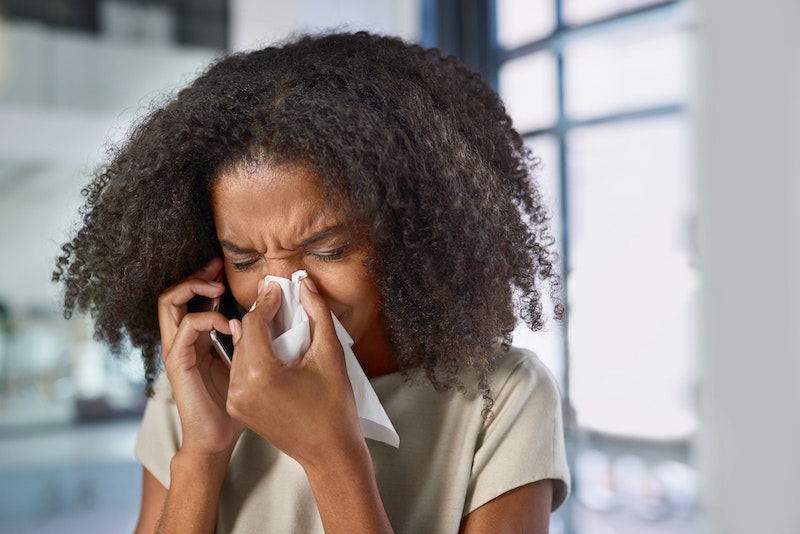When was the last time you cleaned your smartphone? (We’re not just talking about wiping ramen splotts off with a napkin.) Perhaps you’ve seen alarming headlines like, “Your Cellphone Is 10 Times Dirtier Than a Toilet Seat", or read that one out of six may have fecal bacteria on them. It gives new meaning to the term digital detox.
Before you panic and douse your phone in bleach, know that not all germs are out to get us. “Most of the stuff that studies find on surfaces is from people’s own skin and body, that means it most likely won’t get you sick,” explains Amesh Adalja, MD, senior scholar at the Johns Hopkins Center for Health Security. As you’re reading this sentence, there are anywhere from one million to one billion microbes hanging out on each square centimeter of your skin. We co-exist with trillions of bacteria, viruses, and germs, most of which don’t cause us any harm. Some of them even do some good.
Still, while there’s no evidence of an epidemic of tech-related infections, some researchers and public health authorities have pointed to theoretical risks of exposure to risky pathogens on our personal gadgets. There’s no need to obsessively clean everything all the time, Adalja says, but a regular cleaning regimen can help squash those bad germs and keep you healthy. Here’s what might be clinging to your tech devices — and the best way to disinfect each.
1. Smartphones
What’s on them: Researchers have found MRSA, E. coli, klebsiella, and resistant strains of enterococci viruses on hospital staff members’ and patients’ cellphones. They can also spread cold and flu viruses, says Charles Gerba, PhD, a microbiologist at the University of Arizona. These devices can become petri dishes because we’re constantly touching surfaces and then our phones, introducing and moving microbes around all day, says Gerba. One company found that people swiped and tapped their cells nearly 2,700 times a day!
When you consider that phones also come into the bathroom and kitchen with many of us, it means there are a lot of opportunities for germs to hitch a ride. That stat about cellphones being dirtier than toilets? Here’s the reason: “We don’t clean our devices as much as we do the bathroom,” says Gerba. “So, a lot of times they end up harboring much more bacteria.”
How to clean: Most manufacturers will advise against using any kind of liquid cleaners or alcohols, which might damage the device. “A microfiber cloth, which removes about 99% of microbes on a phone, will be your best option,” says Gerba. A daily towel off is plenty, he says.
2. Earbuds
What’s on them: A recent Nigerian study found staph, strep, E. coli, and fungi that can cause ear infections on earbuds. And they reported that frequent and continuous bud use actually increased microbial growth. The authors recommend regular cleaning and to think twice about sharing them.
How to clean: “Wipe earbuds with a soft, dry, lint-free cloth at least once a week,” says Brian Sansoni of the American Cleaning Institute. “If the ear tips detach, remove them from the earbuds, wash them with mild soap, making sure to rinse thoroughly, and dry with a soft cloth. Allow the ear tips to dry completely before reattaching them to the earbuds.” Make sure not to get any liquid in the openings.
3. Smartwatch or Fitness Tracker
What’s on them: We know from research in a health care setting that wristwatches can pick up things like MRSA, and E. coli. While not a peer reviewed study, a UK watch company did its own test and found bacteria, mold, and yeast on the watches tested. Plastic-banded fitness trackers had the most germs. The survey found that about a quarter of us never cleaned them and 21% wiped them down only once every six months.
How to clean: “Sweat and other particles or residue can build up on your device band, so regularly cleaning it will help prevent buildup,” says Sansoni. He recommends wiping bands down with a lint-free cloth once a week. To remove residue from lotions, sunscreens, and insect repellent from silicone or TPU elastomer bands, use rubbing alcohol with a cloth, then rinse with water, Sansoni says. “If your nylon band has dirt or stains, use a mild soap and rinse thoroughly with water. In all cases, allow the band to dry completely before wearing,” he adds, or your germ problem could get worse.
4. Computers
What’s on them: Gerba’s lab has found influenza, cold and flu viruses, and norovirus on desktops, and he suspects the same germs could be found on laptops as well. Researchers have also found two drug-resistant types of bacteria that could survive up to 24 hours on health care workers’ keyboards.
How to clean: Make sure your computer is powered off before attempting any tidying up. “Never spray any cleaner directly on any part of your computer,” says Sansoni, since doing so can damage it. “Instead, mist it onto a cloth and then wipe down gently.” Wipe your keyboard and mouse with an all-purpose cleaner at least once a week. You can also use an air-duster to get rid of any particles that might have crept into the keyboard’s crevices, adds Sansoni..
MAGGIE PUNIEWSKA
Rally Health





